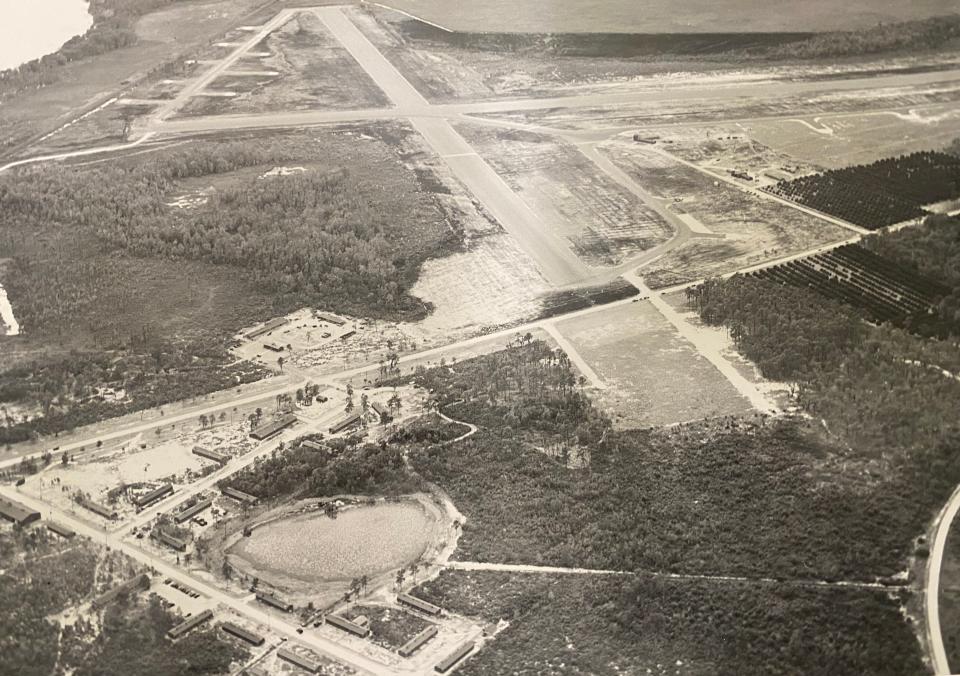Before it was Leesburg International Airport, it was a training base for WWII

LEESBURG — Leesburg International Airport is home today to sleek executive jets and private airplane.
But it was once the home of Army Air Corps pilots who would unleash iron bombs and hot lead on Hitler’s fortress Europe in Normandy in the days leading up to D-Day, June 6, 1944.
Honor the fallen:Memorial Day ceremonies set in Lake, Sumter Counties
In the news this week:Leesburg High mural, a community effort, will honor students past, present and future
Salute:South Lake’s Naval Science Instructor trains tomorrow’s leaders
The 'Lucky Puppies'
The U.S. military knew a world war was coming in the 1930s and started looking for air base sites, authors Lee King and Ken Huff wrote in their book “The Leesburg International Airport and 150 years of History.”
Local attorney attorney Henry Pringle and other property owners decided to donate a large chunk of land to the federal government across from what is now U.S. Highway 441 and Silver Lake. It would be good for the country and good for the local economy, they reasoned.
Once the land was cleared, a one-mile runway was built in 1941.
First equipped with P-40 fighter planes, then P-47 Thunderbolts, the 400-man 313th Fighter Squadron trained both in day and night missions.
Nicknamed the “Lucky Puppies,” they were more like hot dogs, as they men sweltered in tents until barracks were built.
“Father and I felt sorry for them sitting on the ground, sweating in the hot sun,” said Rosemary Pringle Purdum. “We gathered up our lawn chairs and took them to the men. That way they could at least sit comfortably in the shade while roughing it.”
'The knights in shining armor of World War II'
On weekends, the men headed to town looking for dances, a movie, or a cold beer.
“At the top of the elite world of the Allied air forces stood the fighter pilots. Young, cocky, skilled veteran warriors — in a mass war fought by millions, the fighter pilots were the only glamorous individuals left,” wrote Stephen Ambrose in his classic, "D Day: June 6, 1944: The Climactic Battle of World War II." “Up there all alone in a one-on-one with a Luftwaffe fighter, one man’s skill and training and machine against another’s, they were the knights in shining armor of World War II.”
Training was dangerous, including night missions, where giant searchlights were aimed at pilots trying to disorient them, or engaging in low-level air-to-air “dog fights.”

Some never made it to France. A few years ago, a passerby found part of an airplane wing in Lake Harris. More than one plane crashed during the Air Corp’s stay.
The base took on a new look in 1943 when the 313th moved out and German prisoners of war moved into barracks where Lake-Sumter College is now located.
They were captured members of Gen. Erwin Rommel’s Afrika Korps.
Concerned at first that they might cause trouble, POWs were glad to be in Florida, where they were contracted out to farmers to pick oranges. They had their own soccer field and were allowed to go swimming. They even had their own beer garden.
After the war, the air strip was declared to be war surplus, and was deeded to the city, and the Pringles got some of their land back.
This article originally appeared on Daily Commercial: A look at the military history of Leesburg International Airport

